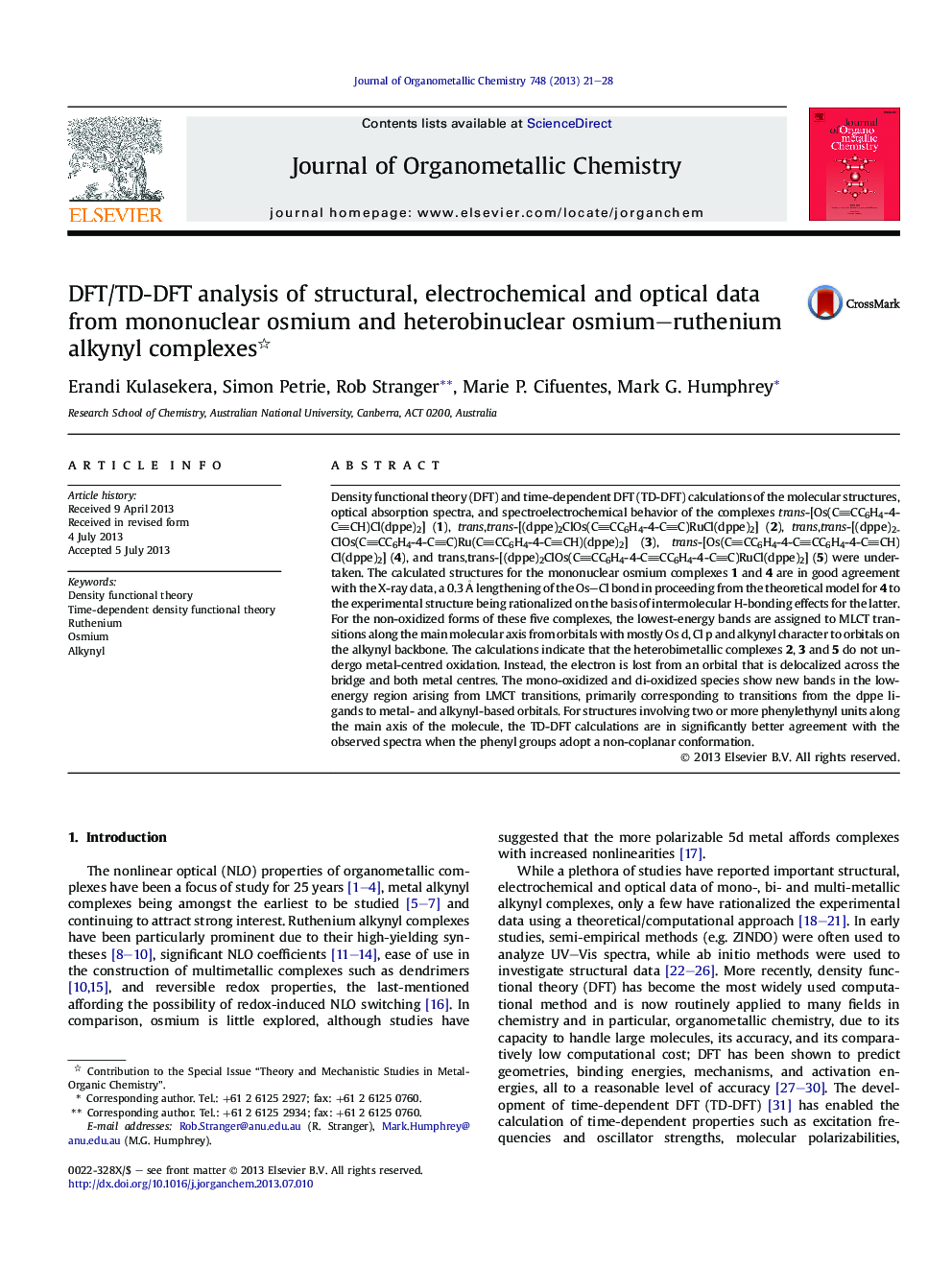| Article ID | Journal | Published Year | Pages | File Type |
|---|---|---|---|---|
| 1322600 | Journal of Organometallic Chemistry | 2013 | 8 Pages |
•DFT calculations reproduce molecular structures of heterobimetallic alkynyl complexes.•Low-energy bands in the UV–Vis spectra of the complexes are MLCT transitions.•Low-energy bands of mono- and di-oxidized complexes arise from LMCT transitions.•TD-DFT calculations agree best with observed spectra when phenyl groups are non-coplanar.
Density functional theory (DFT) and time-dependent DFT (TD-DFT) calculations of the molecular structures, optical absorption spectra, and spectroelectrochemical behavior of the complexes trans-[Os(CCC6H4-4-CCH)Cl(dppe)2] (1), trans,trans-[(dppe)2ClOs(CCC6H4-4-CC)RuCl(dppe)2] (2), trans,trans-[(dppe)2ClOs(CCC6H4-4-CC)Ru(CCC6H4-4-CCH)(dppe)2] (3), trans-[Os(CCC6H4-4-CCC6H4-4-CCH)Cl(dppe)2] (4), and trans,trans-[(dppe)2ClOs(CCC6H4-4-CCC6H4-4-CC)RuCl(dppe)2] (5) were undertaken. The calculated structures for the mononuclear osmium complexes 1 and 4 are in good agreement with the X-ray data, a 0.3 Å lengthening of the Os–Cl bond in proceeding from the theoretical model for 4 to the experimental structure being rationalized on the basis of intermolecular H-bonding effects for the latter. For the non-oxidized forms of these five complexes, the lowest-energy bands are assigned to MLCT transitions along the main molecular axis from orbitals with mostly Os d, Cl p and alkynyl character to orbitals on the alkynyl backbone. The calculations indicate that the heterobimetallic complexes 2, 3 and 5 do not undergo metal-centred oxidation. Instead, the electron is lost from an orbital that is delocalized across the bridge and both metal centres. The mono-oxidized and di-oxidized species show new bands in the low-energy region arising from LMCT transitions, primarily corresponding to transitions from the dppe ligands to metal- and alkynyl-based orbitals. For structures involving two or more phenylethynyl units along the main axis of the molecule, the TD-DFT calculations are in significantly better agreement with the observed spectra when the phenyl groups adopt a non-coplanar conformation.
Graphical abstractDFT and TD-DFT calculations have been performed on mononuclear osmium and heterobinuclear osmiumruthenium alkynyl complexes to rationalize their experimental structures and assign their optical spectra both in the resting state and in the oxidation products.Figure optionsDownload full-size imageDownload as PowerPoint slide
